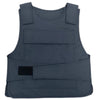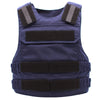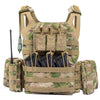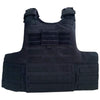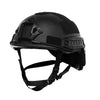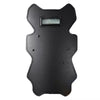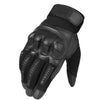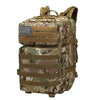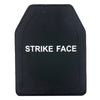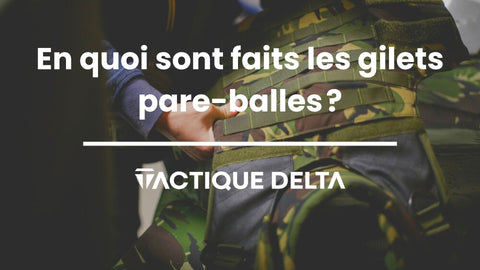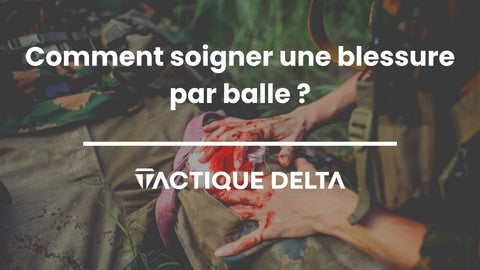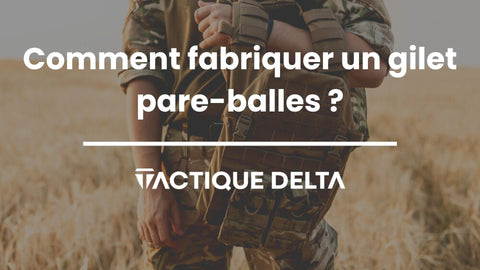
How to treat a gunshot wound?
of reading
Have you always wondered what the protocol is for treating a gunshot wound, whether serious or superficial?
If you are in the military or in law enforcement, you may encounter situations in which firearms are present, and sometimes it may happen that you or one of your colleagues finds themselves in critical situation.
You should know that in France, the vast majority of retired paramedics have never treated this type of injury during their entire career. That said, even in France, zero risk does not exist. Moreover, the chances of being injured by a gunshot can increase considerably depending on the job you do. Additionally, it is important to note that, if not immediately treated, gunshot wounds can quickly become fatal. Therefore, learning the essential basics for treating this type of injury is essential if you wish to enter these types of professions. In this article, we invite you to discover:
- What are the first reflexes to have when treating a gunshot wound?
- How to properly treat the most targeted parts of the body?
- What are the characteristics of gunshot wounds?
- How to treat the gunshot wound afterwards?
Let's get started without further ado!
Treating a gunshot wound: the first reflexes
When a person is hit by a bullet, it is essential to provide them with as much support as possible as quickly as possible. Indeed, as soon as the projectile lodges in the body or passes through it, a race against time begins. The first moments are therefore decisive, and you must make sure you make all the right decisions in the right order. Here, in a few points, is how you should react in such a situation:
Place the injured person in shelter
Granted, in most cases you can skip this step altogether, as the vast majority of gunshot wounds are inflicted by accident. That said, if the accident occurs in a dangerous location, such as on a road, or if the person is shot deliberately, it is essential to first try to get the injured person to a safe place. Please ensure that the weapon used has been secured, that the attacker has fled or has been neutralized, before seeking to help the injured person.
Call an ambulance
As we previously stated, gunshot wounds require rapid intervention . Therefore, it is vital that paramedics arrive on scene as quickly as possible. For this reason, before even providing first aid to the injured person, you must call the emergency services so that they can send you an ambulance. Ideally, the latter should arrive on site within a maximum of ten minutes. This will allow the injured person to arrive at the hospital in time for effective care.
Stop the bleeding
As you may have guessed, stopping the bleeding is a crucial step in treating gunshot wounds. To do this, you must apply strong pressure to the injury , using a clean piece of cloth. This operation is much more difficult than you think, because it requires a lot of force on a constant basis, until help arrives. For this reason, do not hesitate to use your weight by placing your knee on the injury. This will save you a lot of energy and free your hands to perform the following steps. Finally, place the injured person in the Lateral Safety Position (PLS), while waiting for the ambulance to arrive.
What absolutely should not be done
When treating a gunshot wound, some people may have poor reflexes. You must therefore prevent them from:
- Give the injured person something to drink (including water)
- Feed the injured person
- Raise the injured person's legs (this can accelerate blood circulation and therefore bleeding)
Providing first aid to the gunshot wound
The reason gunshot wounds are particularly dangerous is because they puncture the body. If, in the best case scenario, the bullet completely pierces the affected part of the body, it still remains extremely dangerous. On the other hand, it is technically almost impossible for an untrained eye to differentiate between the entry point and exit point of the ball.
That said, for information purposes, be aware that the hole left by the bullet during its impact with the body is almost always smaller than the one it leaves when it exits. In this part, we will explain to you how to treat injuries depending on the affected part of the body:
How to treat a gunshot wound to the torso
A gunshot wound to the torso is likely to be fatal because it risks affecting vital organs (the heart and lungs). Other, equally dangerous, injuries can cause an aspiration chest injury , which allows air to enter the body.
When preparing to treat a gunshot wound to the torso, first block the opening caused by the bullet with an insulating material (preferably plastic). This isolation will have the effect of limiting the risk of lung collapse. Note that if the injured person's breathing becomes even more difficult after you have sealed the wound, it is best to remove the plastic and apply less force with the hands.
How to treat an abdominal gunshot wound
A gunshot wound to the abdomen can also be extremely dangerous. Among other things, it can cause severe bleeding and serious damage to internal organs. As with all other gunshot wounds, in order to limit the damage, it is imperative to apply pressure to it.
However, unlike the latter, wounds to the intestines and stomach can easily become infected. This is most likely to happen when stomach fluid enters the abdominal cavity. So don't wait before checking if the abdomen begins to swell. If this is the case, this means that the infection has already occurred and it is imperative that the injured person receives professional care as soon as possible. Also note that even a small caliber bullet can cause infection.
How to treat a gunshot wound to the limbs
Even if a gunshot wound to one of the limbs is considered to be the least serious, it should not be underestimated. Indeed, such an injury has a high chance of tearing blood vessels, which can quickly be fatal.
Likewise, the bullet may pierce or lodge in bones, and it is even likely to hit sensitive nerves, thereby paralyzing the affected limb. In this case, when attempting to provide first aid, avoid moving the injured limb at all costs. Just stop the bleeding and wait for help to arrive .
How to treat a gunshot wound to the neck
You may have already guessed it, but the gunshot wound to the neck is obviously the most dangerous. Indeed, the bullet can easily pierce the carotid artery, which has the effect of preventing blood from reaching the brain. In this case, the chances of survival are extremely slim. All you can do in such a situation is to stop the injured person from struggling , as this may make their condition worse. If the bullet has struck the spinal cord, the sudden movement of the neck can cause immense nerve damage.
What you absolutely need to know about gunshot wounds
Damage caused by bullets, large or small caliber, is not limited to the exact place where the bullet enters the body. In reality, it is not uncommon for the projectile to move and change trajectory immediately after impact. Naturally, it can completely pierce the body or lodge inside it.
That said, depending on the part hit, the caliber of the bullet in question and its speed, it is possible to make a rough estimate of the damage. All the factors mentioned above are decisive. However, the speed of the projectile remains the most important element to consider.
We can take the example of submachine guns , which are known for their high velocity bullets. Since the latter have much more speed than pistol bullets, they inevitably cause more damage. To get an idea of the destructive force of a bullet, you simply multiply its mass by the velocity² (squared).
Mathematically, we can see that, since the velocity is squared, it is enough to double the speed for the damage to be almost quadrupled. This report clearly demonstrates that the speed of the projectile is decisive in calculating its force upon impact.
Furthermore, it is important to note that many materials used in the manufacture of balls are extremely harmful to the body. It is therefore important to dislodge the ball as quickly as possible. However, the operation is far too complex, even for a large number of medical professionals.
In short, we can say that the severity of a gunshot wound is defined based on the part of the body that was hit, the caliber of the bullet, and its speed. Thus, a headshot is significantly more dangerous than shots to the body. On the other hand, a bullet that lodges in the abdomen or causes fractures is significantly more likely to cause infection.
Necessary care during the convalescence period
Gunshot wounds can cause countless damages, such as:
- The bleeding
- Paralysis
- Infections
- Bone fractures
- Failures or cessation of function of internal organs
Treatment of gunshot wound
The vast majority of gunshot wounds have indeed undergone operations. The best-known interventions essentially concern:
- Stopping the bleeding
- Cleaning the wound
- Removing bullet fragments
- Removing shards from bones
- Amputation of limbs or parts of one or more internal organs
In general, miracle gunshot wounds, whom the bullet passes through without damaging their internal organs, their nerves, or even their bones, do not have to undergo operations. On the other hand, those who find themselves with fragments of bone or metal in their body must go to the operating room to survive.
Their injuries also heal much more slowly, and depending on the severity of the base injury, their respective treatments are generally more complex.
For postoperative care of a gunshot wound to be effective, you must:
- Preserve the wound from water
- Keep the wound clean (follow medical instructions)
- Never use chemical cleaning solutions
- Never resort to alternative medicine to heal the injury
- Constantly take antibiotics and anti-inflammatories (against infections)
- Keep the wound higher than the heart (to limit swelling)
- Periodically place an ice pack on the bandage (in order to cool the wound)
How to shower or bathe after a gunshot wound?
The doctor will certainly tell the patient when it is safe to take a shower. Moreover, he will probably advise the shower rather than the bath, because its use is much less dangerous for the injured. It is also important to avoid removing the dressing and never rub the wound. You should also remember to dry it before wearing your clothes.
Now that you've learned everything you need to know about gunshot wounds and how to treat them immediately, you should have no problem handling extreme situations during a shooting. Do not forget the order of the steps that must be followed in order to provide first aid to an injured person. The main thing is to never lose your composure, and to act above all with the aim of allowing the injured person to survive the incident, without exposing yourself to danger.
To better protect you from deadly shots, our company, Delta Tactics, offers you a multitude of combat equipment, such as bulletproof vests , ballistic plates and much more. You will find in particular NIJ 3A Bulletproof Vests , for greater efficiency, or even a Clothing Bulletproof Vest , more discreet.

